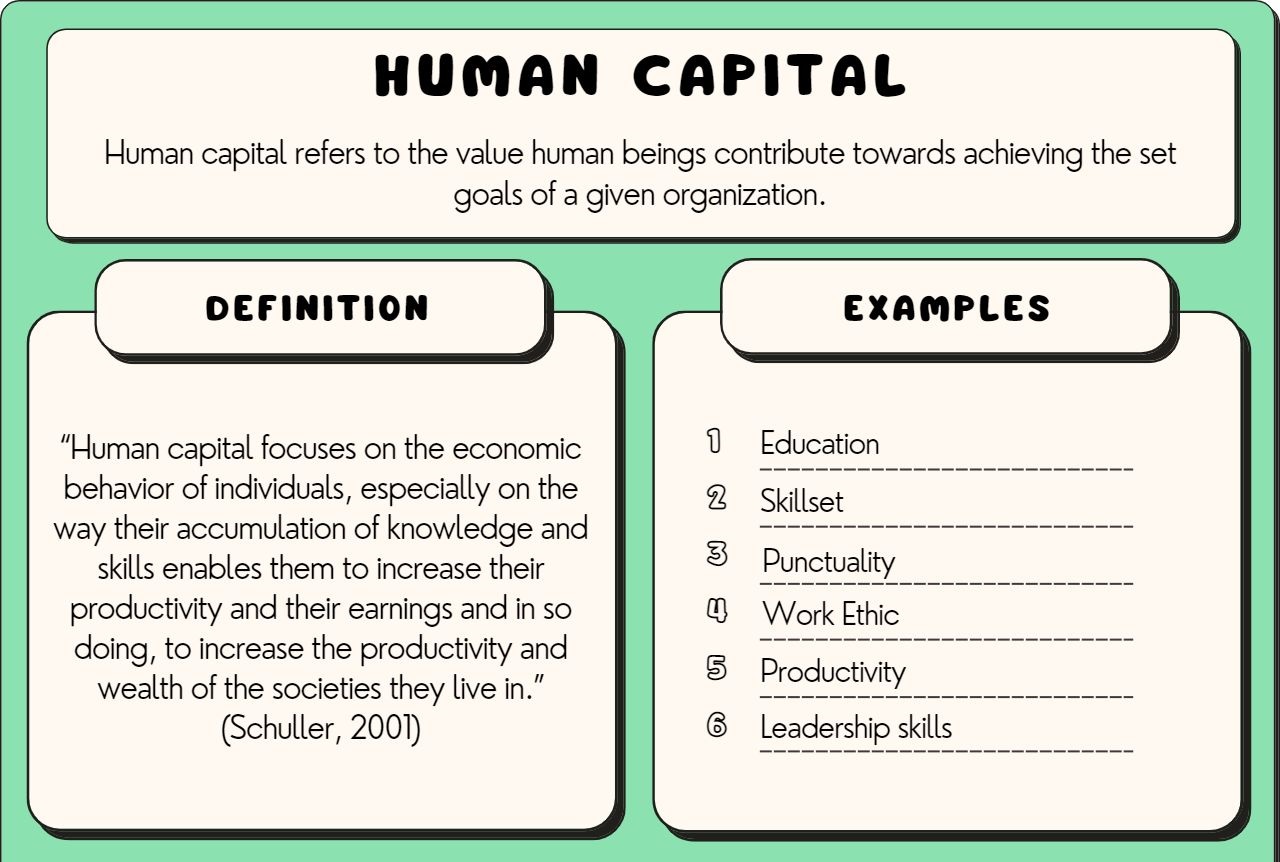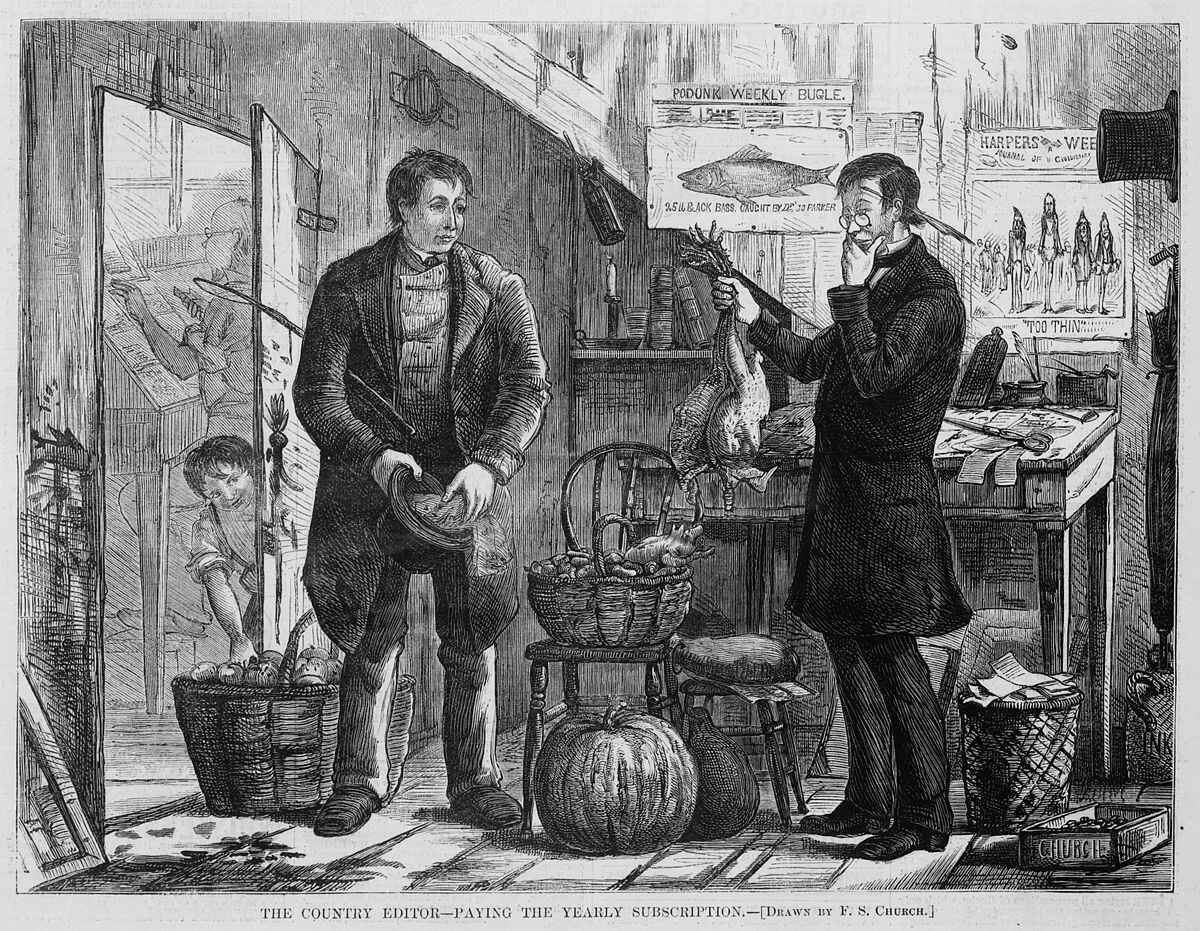Introduction
Investments in human capital play a crucial role in enhancing the standard of living in a country. Human capital refers to the knowledge, skills, abilities, and health of individuals that contribute to their productive potential in the workforce. By investing in education, healthcare, skills development, and other forms of human capital, countries can improve their economic and social well-being. This article explores the importance of investments in human capital and the positive impact they have on a country’s standard of living.
In today’s knowledge-based economy, human capital has emerged as a key driver of economic growth and competitiveness. It is no longer just about physical resources or infrastructure; investing in human capital has become central to a country’s development strategy. By equipping individuals with the necessary skills and knowledge, investments in human capital can enhance productivity, increase the human capital stock, create a skilled workforce, and lift people out of poverty.
Investments in human capital offer several economic benefits. Firstly, they lead to improved productivity. When individuals receive quality education and training, they become more efficient and effective in performing their jobs. This, in turn, boosts overall productivity levels and drives economic growth. By investing in human capital, countries can tap into the potential of their workforce and achieve higher levels of output.
Secondly, investments in human capital contribute to the increase in the human capital stock. As individuals acquire new skills and knowledge, the overall human capital of the country grows. This accumulation of human capital enhances the country’s capacity for innovation, technological advancement, and economic diversification. A strong human capital base is crucial for sustained economic development in an increasingly competitive global landscape.
Definition of Human Capital
Human capital refers to the intangible assets embodied in individuals, including their knowledge, skills, abilities, and health, which contribute to their productive potential in the workforce. It encompasses both the formal education and training individuals receive, as well as their on-the-job experience and continuous learning throughout their lives.
Unlike physical capital, which depreciates over time, human capital has the potential to grow and appreciate. It can be enhanced through investments in education, healthcare, skills development, and other forms of human capital development. The concept of human capital recognizes that individuals are not just passive resources; they are active agents who can contribute to economic growth and prosperity through their unique skills and abilities.
Human capital can be categorized into two main types: general and specific. General human capital refers to broad-based skills and knowledge that are transferable across different industries and job roles. This includes foundational education, critical thinking skills, problem-solving abilities, and communication skills. General human capital enables individuals to adapt to changing labor market demands and increases their employability in a wide range of occupations.
On the other hand, specific human capital refers to skills and knowledge that are specific to a particular industry, occupation, or company. This includes specialized training, expertise in a particular field, and industry-specific knowledge. Specific human capital enhances productivity and innovation within a specific sector and is often acquired through on-the-job training, apprenticeships, or industry certifications.
Human capital is not limited to cognitive abilities and technical skills. It also includes the health and well-being of individuals. Good health is vital for individuals to fully utilize their skills and contribute effectively to the workforce. Investments in healthcare and preventive measures, such as access to quality healthcare services, nutrition, sanitation, and a safe working environment, are essential for developing a healthy and productive workforce.
Overall, human capital is a critical determinant of a country’s economic growth, competitiveness, and standard of living. By investing in the development and enhancement of human capital, countries can unlock the full potential of their population and pave the way for sustainable and inclusive development.
Importance of Investments in Human Capital
Investments in human capital are crucial for the economic and social development of a country. They contribute to the overall well-being and standard of living of its population. Here are some key reasons why investments in human capital are important:
1. Enhanced Productivity: Investing in human capital through education, training, and skill development programs significantly improves individuals’ productivity. When individuals acquire new knowledge and skills, they become more efficient and effective in their work. This increased productivity has a positive impact on overall economic output and competitiveness, leading to higher incomes and improved living standards.
2. Innovations and Technological Advancements: Investments in human capital foster innovation and technological advancements. Skilled individuals with advanced knowledge and expertise are more likely to develop new ideas, technologies, and solutions to address societal challenges. These innovations can drive economic growth, create new industries, and enhance a country’s competitiveness in the global market.
3. Reduced Unemployment and Poverty: By investing in human capital development, countries can reduce unemployment rates and lift people out of poverty. By equipping individuals with the necessary skills and knowledge, they become more employable in various sectors, increasing their chances of finding decent and well-paying jobs. This, in turn, improves their quality of life and reduces poverty levels.
4. Long-Term Economic Growth: Investments in human capital have long-term implications for economic growth. They contribute to the development of a skilled and adaptable workforce, which stimulates innovation, increases productivity, and attracts foreign investment. A strong human capital base is essential for sustained economic growth and prosperity in a rapidly changing global economy.
5. Social Cohesion and Inclusion: Investments in human capital promote social cohesion and inclusion by providing equal opportunities for all individuals to develop their skills and abilities. Education and training programs can help bridge the gap between different socio-economic groups and reduce inequalities. When individuals have access to quality education and healthcare, it creates a more equitable society where everyone has a chance to succeed.
6. Resilience to Economic Shocks: Countries with a well-developed human capital base are better equipped to withstand and recover from economic shocks and disruptions. Skilled individuals are more adaptable and can switch industries or occupations more easily, reducing the negative impact of economic downturns. Moreover, investments in health and education create a healthier and more resilient population, which can better cope with health crises and pandemics.
Investing in human capital is not only essential for economic growth but also for creating a more equitable and inclusive society. It empowers individuals, reduces poverty, promotes social cohesion, and improves the overall well-being and standard of living in a country.
Economic Benefits of Investments in Human Capital
Investments in human capital yield numerous economic benefits that drive the growth and prosperity of a country. Here are some key economic benefits of investing in human capital:
1. Improved Productivity: Investments in human capital, such as education and skills development programs, enhance the productivity of individuals in the workforce. When individuals acquire new knowledge, skills, and abilities, they become more efficient and effective in their roles, leading to higher output per worker. Higher productivity levels result in increased economic output, which contributes to economic growth and higher incomes.
2. Increase in Human Capital Stock: Investments in human capital contribute to the growth of a country’s human capital stock. By providing opportunities for education and skills development, the overall knowledge and skills of the population increase. This accumulation of human capital fosters innovation, creativity, and the ability to adapt to changing economic conditions. A larger human capital stock equips a nation with the necessary resources to drive economic development and withstand challenges.
3. Creation of Skilled Workforce: Investments in human capital create a highly skilled and competent workforce. A skilled workforce is essential for attracting investments, especially in industries that rely on specialized knowledge and technological advancements. Skilled workers are more likely to secure higher-paying jobs, contribute to innovation, and increase the competitiveness of industries, leading to higher economic growth and job creation.
4. Lifting People out of Poverty: Investments in human capital play a significant role in reducing poverty. By providing access to quality education, vocational training, and healthcare, individuals can acquire the skills and knowledge required to secure better job opportunities. As individuals earn higher incomes, they are able to escape poverty, improve their living conditions, and contribute to the overall economic growth of their communities.
5. Enhancing Labor Market Flexibility: Investments in human capital enable individuals to adapt to changing labor market demands. Rapid technological advancements and evolving industries require a workforce that can readily acquire new skills and adjust to new job roles. Human capital investments, such as lifelong learning programs and upskilling initiatives, equip individuals with the ability to navigate through career transitions, reducing unemployment rates and enhancing labor market flexibility.
6. Stimulating Innovation and Entrepreneurship: A well-developed human capital base is vital for fostering innovation and entrepreneurship. Skilled individuals are more likely to engage in research and development, generate new ideas, and contribute to technological advancements. By investing in human capital, countries can empower individuals to become innovators, driving economic growth, attracting investment, and creating new industries.
Overall, investments in human capital have substantial economic benefits. They enhance productivity, increase the human capital stock, create a skilled workforce, lift people out of poverty, and stimulate innovation and entrepreneurship. By prioritizing these investments, countries can experience sustained economic growth, higher living standards, and a competitive edge in the global economy.
Improved Productivity
Investments in human capital have a direct impact on improving productivity levels in a country. By equipping individuals with relevant knowledge, skills, and abilities, investments in human capital enhance their efficiency and effectiveness in the workforce. Here are some key aspects illustrating how investments in human capital lead to improved productivity:
1. Enhanced Skills and Knowledge: Investments in education and training programs enable individuals to acquire specialized skills and knowledge that are applicable to their respective industries. This equips them with the expertise needed to perform their job functions with a higher level of competency. With a strong foundation of knowledge and skills, individuals are more equipped to contribute successfully to their organizations, resulting in increased productivity.
2. Adaptability and Flexibility: Continuous investments in human capital ensure that individuals can adapt to emerging trends and technological advancements. With access to ongoing training and learning opportunities, employees can stay updated with industry best practices. This adaptability and flexibility to embrace change result in a workforce that is more responsive to market demands, leading to improved productivity at both the individual and organizational levels.
3. Enhanced Problem-Solving Abilities: Investments in human capital also focus on developing critical thinking and problem-solving skills. Through education and training, individuals learn how to analyze complex situations, identify innovative solutions, and make informed decisions. This ability to think critically and solve problems efficiently enhances productivity by minimizing errors, streamlining processes, and promoting more effective decision-making within organizations.
4. Improved Collaboration and Communication: Effective investments in human capital foster teamwork, collaboration, and effective communication skills. By promoting a collaborative work environment, individuals can work cohesively with their colleagues, exchange ideas, and leverage diverse perspectives to reach common goals. Strong communication skills enable efficient exchange of information, reducing misunderstandings and enhancing productivity by fostering clearer and more effective work interactions.
5. Employee Engagement and Motivation: Investments in human capital also involve creating work environments that engage and motivate employees. When individuals feel valued and supported, they are more likely to demonstrate higher levels of commitment and dedication. Engaged and motivated employees invest their time and energy into their work, leading to increased productivity. Organizations that prioritize employee well-being and provide opportunities for professional growth and development experience higher levels of employee engagement and, consequently, improved productivity.
6. Technology Adoption and Innovation: Investments in human capital include providing individuals with the necessary skills to leverage technology. This allows organizations to take advantage of technological advancements and increase operational efficiency. Technologically skilled individuals can adopt and use tools, software applications, and automation effectively, leading to improved productivity and innovation within the workplace.
By investing in human capital, countries can improve productivity levels across various sectors of the economy. Through enhanced skills and knowledge, adaptability to change, problem-solving abilities, collaboration and communication, employee engagement, and technology adoption, investments in human capital provide the foundation for a highly productive workforce, fostering economic growth and sustainable development.
Increase in Human Capital Stock
Investments in human capital contribute to the increase in a country’s human capital stock. By providing opportunities for education, skills training, and continuous learning, investments in human capital enable individuals to acquire new knowledge, skills, and abilities. Here are some key aspects illustrating how investments in human capital lead to an increase in the human capital stock:
1. Education and Formal Training: Investments in education, from early childhood education to higher education, play a crucial role in expanding the human capital stock. Accessible and quality education equips individuals with foundational knowledge and skills necessary for their personal and professional growth. A well-educated population contributes to a larger pool of skilled individuals, increasing the human capital stock of the country.
2. Skills Development Programs: Investments in skills development programs enhance the human capital stock by providing individuals with specialized skills relevant to the evolving needs of the labor market. These programs can take the form of vocational training, apprenticeships, and professional development courses. By equipping individuals with industry-specific skills, investments in skills development increase the human capital pool in specific sectors.
3. Lifelong Learning Initiatives: Continuous investments in human capital support lifelong learning initiatives that encourage individuals to acquire new knowledge and skills throughout their lives. Lifelong learning ensures that individuals can adapt to changing economic and technological landscapes. It allows individuals to upskill or reskill, further expanding the human capital stock and ensuring a workforce that remains relevant and competitive.
4. Brain Gain through Migration: Investments in human capital can also result in a brain gain through migration. When countries invest in education and create a conducive environment for skilled individuals, they attract talent from around the world. Skilled migrants contribute to the human capital stock of the host country, bringing diverse perspectives, knowledge, and expertise that further enrich the workforce and drive economic development.
5. Emphasis on Research and Development: Investments in research and development (R&D) enhance the human capital stock by fostering innovation and generating new knowledge. A focus on R&D promotes scientific and technological advancements, attracting talented individuals who can contribute to cutting-edge research. The outputs of R&D efforts, such as patents, publications, and technological innovations, further enhance the human capital stock of a country by expanding its knowledge base.
6. Access to Quality Healthcare: Investments in healthcare contribute to the increase in the human capital stock by improving health outcomes and extending productive lifespan. Access to quality healthcare services, preventive measures, and health education leads to healthier and more productive individuals. When health needs are addressed, individuals are able to fully utilize their skills and contribute effectively to the workforce, thus increasing the human capital stock.
By investing in the development of human capital, countries can expand their pool of skilled individuals. Education, skills development programs, lifelong learning initiatives, attracting skilled migrants, emphasis on research and development, and access to quality healthcare all contribute to the overall increase in the human capital stock. A larger human capital stock strengthens a country’s competitiveness, fosters innovation and economic growth, and enhances the overall well-being and standard of living of its population.
Creation of Skilled Workforce
Investments in human capital contribute to the creation of a skilled workforce, which is crucial for a country’s economic competitiveness and development. By providing individuals with the necessary education, training, and skill development opportunities, investments in human capital foster the development of a workforce with specialized knowledge and expertise. Here are some key aspects illustrating how investments in human capital lead to the creation of a skilled workforce:
1. Education System: Investments in human capital begin with a well-functioning education system. By investing in schools, colleges, and universities, countries can provide individuals with foundational knowledge and skills. A strong education system ensures that individuals are equipped with the necessary cognitive abilities, critical thinking skills, and a strong academic foundation, which form the basis for developing a skilled workforce.
2. Technical and Vocational Training: Investments in technical and vocational training programs enable individuals to acquire specific technical skills necessary for various industries. These programs focus on practical training and equip individuals with hands-on experience in specific trades or occupations. Technical and vocational training bridges the gap between academic knowledge and practical skills, ensuring individuals possess the necessary expertise to meet industry demands.
3. Apprenticeships and On-the-Job Training: Investments in apprenticeship programs and on-the-job training provide individuals with real-world work experience and the opportunity to further refine and develop their skills. These programs allow individuals to gain industry-specific knowledge under the guidance of experienced professionals, honing their skills and increasing their practical expertise. Apprenticeships and on-the-job training programs play a crucial role in creating a skilled and competent workforce.
4. Professional Development and Continuing Education: Continuous investments in human capital include providing opportunities for professional development and continuing education. These initiatives enable individuals to stay updated with industry trends, advancements, and evolving best practices. Professional development programs, workshops, conferences, and certifications enhance the skills of individuals, ensuring they remain competitive and adaptable in a changing work environment.
5. Collaboration with Industries: Collaboration between educational institutions and industries is essential for creating a skilled workforce. Investments in partnerships between academia and industry allow for the alignment of educational programs with industry needs. This collaboration ensures that the skills taught are relevant and in-demand, increasing the employability of graduates and creating a workforce that meets the needs of industries.
6. Ongoing Skills Assessment and Updation: Investments in human capital also involve regularly assessing and updating the skills required by the workforce. This includes conducting skills gap analyses and identifying areas where additional training or upskilling is necessary. By staying proactive and responsive to evolving skill requirements, investments in human capital ensure a workforce that is equipped with the latest knowledge and competencies.
By investing in human capital and focusing on the creation of a skilled workforce, countries can improve their economic competitiveness. A skilled workforce brings numerous benefits, including increased productivity, innovation, and adaptability. Moreover, a skilled workforce attracts investment, drives economic growth, and contributes to the overall development and prosperity of a country.
Lifting People Out of Poverty
Investments in human capital have the potential to uplift individuals and communities out of poverty. By providing access to education, healthcare, skills training, and employment opportunities, these investments empower individuals to improve their economic circumstances and break the cycle of poverty. Here are some key aspects illustrating how investments in human capital can lift people out of poverty:
1. Access to Education: Investing in education is crucial for lifting people out of poverty. Accessible and quality education provides individuals with the knowledge and skills to secure better job opportunities and higher incomes. With education, individuals are equipped with the tools they need to escape poverty and build a better future for themselves and their families. Moreover, education provides individuals with critical thinking and problem-solving skills, enabling them to overcome challenges and pursue economic opportunities.
2. Skills Development and Vocational Training: Investments in skills development and vocational training programs help individuals acquire the skills demanded by the labor market. By providing training in specific trades or occupations, these programs enhance individuals’ employability and open doors to jobs that offer better wages and working conditions. Developing relevant skills empowers individuals to earn a sustainable income, reducing their reliance on low-paying, informal employment which perpetuates poverty.
3. Access to Healthcare: Investments in healthcare contribute significantly to poverty alleviation. Access to quality healthcare services ensures that individuals can prevent, treat, and manage health issues that may otherwise hinder their ability to work and earn a living. Good health allows individuals to be more productive, reducing healthcare-related costs and improving their overall quality of life.
4. Promoting Entrepreneurship: Investments in human capital also support the development of entrepreneurial skills and opportunities. By providing aspiring entrepreneurs with access to training, mentorship, and financial resources, individuals can start their own businesses and generate income. Entrepreneurship can be a path out of poverty, as it offers individuals the chance to create income-generating activities and contribute to the local economy.
5. Empowering Women: Investments in human capital have a profound impact on gender equality and poverty reduction. Providing equal access to education, training, and employment opportunities for women can break down barriers and empower them to create sustainable livelihoods. Women’s economic empowerment is instrumental in reducing poverty, as it positively impacts their families and communities.
6. Social Safety Nets and Support Programs: Investments in human capital can also include the establishment of social safety nets and support programs. These programs provide financial assistance, healthcare benefits, and education opportunities to vulnerable populations, ensuring that they have access to basic necessities. By providing a safety net, individuals and families can have a more stable foundation from which to build a path out of poverty.
By investing in human capital, countries can bring about long-term improvements in poverty reduction. Providing access to education, skills training, healthcare, and entrepreneurial opportunities empowers individuals to improve their economic circumstances and break free from the constraints of poverty. These investments not only uplift individuals and families but also contribute to the overall development and prosperity of a nation.
Social Benefits of Investments in Human Capital
Investments in human capital have significant social benefits that go beyond economic growth. By prioritizing education, healthcare, skills development, and overall human well-being, these investments can lead to positive social outcomes. Here are some key social benefits of investing in human capital:
1. Reduction in Social Inequalities: Investments in human capital help reduce social inequalities. Providing equal access to quality education and healthcare ensures that individuals from all backgrounds have the opportunity to improve their lives. By addressing disparities in access to resources, investments in human capital contribute to a more equitable society, where everyone has an equal chance to succeed and thrive.
2. Enhanced Social Well-being: Investments in human capital improve social well-being by empowering individuals to live healthy and fulfilling lives. Access to healthcare and preventive services improves overall health outcomes, leading to healthier communities. Additionally, investments in education and skill development can enhance social mobility, allowing individuals to escape intergenerational cycles of poverty and achieve their full potential.
3. Improved Healthcare and Education: Investments in human capital result in better healthcare and education systems, benefiting the entire society. Accessible and high-quality healthcare services ensure that individuals receive timely and effective treatment, improving overall health outcomes and reducing the burden of preventable diseases. Similarly, investments in education enhance educational opportunities, leading to a better-informed and more skilled population.
4. Social Cohesion: Investments in human capital promote social cohesion by providing individuals with a sense of belonging and shared purpose. Education and skills development programs facilitate interaction and collaboration among individuals from diverse backgrounds, fostering understanding, tolerance, and empathy. This, in turn, strengthens social bonds and contributes to a more cohesive and harmonious society.
5. Empowerment of Marginalized Groups: Investments in human capital empower marginalized groups, such as women, ethnic minorities, and individuals with disabilities. By providing equal access to education, skills training, and employment opportunities, these investments break down barriers and promote inclusivity. Empowering marginalized groups enhances social justice and enables a more diverse and inclusive society.
6. Civic Engagement and Participation: Investments in human capital foster civic engagement and participation. A well-educated and skilled population is more likely to actively participate in the democratic process, engage in community development initiatives, and contribute positively to social causes. Increased civic engagement leads to a more vibrant and participatory society, where individuals are actively involved in shaping their communities.
Investments in human capital have transformative social benefits that extend beyond economic growth. By reducing social inequalities, enhancing social well-being, improving healthcare and education systems, promoting social cohesion, empowering marginalized groups, and fostering civic engagement, these investments create a more inclusive, resilient, and prosperous society.
Reduction in Social Inequalities
Investments in human capital play a pivotal role in reducing social inequalities within a society. They contribute to creating a more equitable environment by providing equal opportunities for individuals from diverse backgrounds. Here are some key aspects illustrating how investments in human capital lead to a reduction in social inequalities:
1. Equal Access to Education: Investments in education eradicate one of the primary barriers to social mobility. By providing equal access to quality education, regardless of socio-economic background, individuals receive the tools and knowledge necessary for personal and professional growth. This equalization of educational opportunities helps level the playing field, reducing disparities and promoting social equality.
2. Bridging the Skills Gap: Investments in human capital address the skills gap that often perpetuates inequality in the labor market. Providing training and skill development opportunities to underserved communities equips individuals with the necessary capabilities to compete for higher-skilled and higher-paying jobs. By bridging the skills gap, investments in human capital empower individuals to break free from low-wage employment and improve their socio-economic status.
3. Empowerment of Marginalized Groups: Investments in human capital prioritize the empowerment of marginalized groups, such as women, ethnic minorities, and individuals with disabilities. By ensuring equal access to education, skills training, and employment opportunities, these investments break down barriers and promote inclusivity. Empowering marginalized groups helps reduce inequalities in income, representation, and access to resources, fostering a more just and fair society.
4. Health Equity: Investments in human capital include improving access to quality healthcare services for all individuals. This helps reduce inequalities in health outcomes and increases health equity. By ensuring that individuals from marginalized communities have access to healthcare facilities, preventive services, and adequate healthcare coverage, investments in human capital address disparities in health and contribute to a more equitable society.
5. Social Safety Nets: Investments in human capital also encompass the establishment of social safety nets and support programs. These programs provide financial assistance, healthcare benefits, and educational opportunities to economically disadvantaged individuals and families. By providing a safety net, investments in human capital alleviate the burden of poverty and inequality, ensuring that everyone has access to essential resources and opportunities for upward mobility.
6. Community Development Initiatives: Investments in human capital promote community development initiatives that focus on empowering disadvantaged communities. By providing training, resources, and support, investments in human capital enable community members to take charge of their own development. This strengthens community resilience, encourages local participation, and reduces inequalities by empowering communities to drive their own progress.
Investments in human capital are powerful tools in reducing social inequalities and promoting social justice. By ensuring equal access to education, bridging skills gaps, empowering marginalized groups, addressing health disparities, establishing social safety nets, and encouraging community development initiatives, these investments create a more equitable society where individuals have equal opportunities to thrive and contribute to the overall well-being of their communities.
Enhanced Social Well-being
Investments in human capital have a profound impact on social well-being, contributing to the overall quality of life within a society. By prioritizing education, healthcare, and the development of skills and abilities, these investments promote social well-being and create a more prosperous and inclusive society. Here are some key aspects illustrating how investments in human capital enhance social well-being:
1. Improved Health Outcomes: Investments in human capital, particularly in healthcare, result in improved health outcomes for individuals and communities. Access to quality healthcare services, preventive care, and health education leads to reduced morbidity and mortality rates. A healthy population experiences better overall well-being, leading to increased life expectancy, higher productivity, and enhanced quality of life.
2. Access to Quality Education: Investments in education are crucial for a society’s social well-being. High-quality education provides individuals with essential knowledge, skills, and opportunities for personal and professional growth. It equips individuals with the tools they need to participate fully in society, achieve their aspirations, and contribute to the well-being of their communities.
3. Increased Economic Opportunities: Investments in human capital create economic opportunities that contribute to social well-being. By providing individuals with the necessary skills and training, these investments improve employability, leading to higher incomes and better access to resources. Economic opportunities empower individuals to meet their basic needs, support their families, and contribute to the overall development of their communities.
4. Social Inclusion and Equity: Investments in human capital promote social inclusion and equity. By ensuring equal access to education, healthcare, and skills development opportunities, these investments reduce disparities and create a more inclusive society. Everyone, regardless of their background, has the opportunity to fully participate and contribute to social, cultural, and economic activities, leading to enhanced social well-being for all.
5. Strengthened Social Cohesion: Investments in human capital foster social cohesion by providing individuals with shared experiences and common goals. Education and skills development programs bring individuals from different backgrounds together, promoting understanding, empathy, and cooperation. This strengthens social bonds, builds trust, and contributes to a sense of belonging within communities, leading to enhanced social well-being.
6. Personal Development and Fulfilled Lives: Investments in human capital support personal development and the pursuit of fulfilling lives. By providing individuals with opportunities to explore their interests, develop their talents, and pursue their passions, these investments enable individuals to lead more meaningful and satisfying lives. This sense of fulfillment and personal growth contributes to overall social well-being and a more vibrant and engaged society.
Investments in human capital go beyond economic growth, enriching the social fabric of a society. Enhanced social well-being is achieved through improved health outcomes, access to quality education, increased economic opportunities, social inclusion and equity, strengthened social cohesion, and personal development. These investments lay the foundation for a more prosperous, harmonious, and thriving society where individuals can fulfill their potential and contribute to the well-being of their communities.
Improved Healthcare and Education
Investments in human capital focus on improving healthcare and education systems, as they play a fundamental role in the well-being and development of individuals and societies. By investing in these critical domains, countries can achieve significant improvements in both health outcomes and educational attainment. Here are the key aspects illustrating how investments in human capital lead to improved healthcare and education:
Improved Healthcare:
1. Enhanced Access to Healthcare Services: Investments in human capital aim to ensure equal access to healthcare services for all individuals. This includes establishing healthcare facilities, increasing the availability of qualified healthcare professionals, and implementing policies that promote equitable distribution of healthcare resources. Improved access to healthcare ensures that individuals can receive timely and appropriate medical care, leading to better health outcomes.
2. Preventive Measures: Investments in human capital prioritize preventive healthcare measures, such as immunizations, health screenings, and health education. By focusing on prevention, societies can address health issues before they become more severe and costly to treat. Preventive measures contribute to reducing the burden of diseases, increasing overall well-being, and promoting healthier populations.
3. Quality Healthcare Provision: Investments in human capital emphasize the improvement of healthcare quality. This entails investing in medical research, healthcare infrastructure, and the adoption of advanced technologies. By offering high-quality healthcare services, societies can improve health outcomes, reduce medical errors, and enhance patient satisfaction.
Improved Education:
1. Accessible and Inclusive Education: Investments in human capital strive to ensure that all individuals have access to quality education without discrimination. This includes providing resources, building educational facilities, and promoting inclusive policies to address barriers to education. Accessible and inclusive education enables individuals to acquire knowledge, develop skills, and contribute to society, regardless of their background or socio-economic status.
2. Qualified Teachers and Enhancing Teaching Methods: Investments in human capital focus on attracting and retaining skilled teachers who can provide quality education. By investing in teacher training programs, professional development, and improving teaching methods, education systems can enhance teaching quality and better engage students. Qualified teachers are pivotal in unlocking students’ potential and fostering a lifelong love for learning.
3. Modernized Learning Environments: Investments in human capital also prioritize the modernization of learning environments. This includes equipping classrooms with advanced technologies, internet access, and relevant learning resources. Modernized learning environments support interactive teaching methods, personalized learning, and digital literacy, fostering creativity, critical thinking, and innovation among students.
4. Curriculum Development and Relevance: Investments in human capital focus on developing a relevant curriculum that meets the changing needs and demands of the job market. This includes incorporating practical skills, vocational training, and promoting STEM (Science, Technology, Engineering, and Mathematics) education. A well-designed curriculum ensures that students gain the knowledge and skills necessary for future employability and enables them to contribute effectively to society.
By investing in healthcare and education, countries can improve the well-being and future prospects of their citizens. Improved healthcare leads to healthier populations, reduced mortality rates, and enhanced quality of life. Quality education provides individuals with the necessary tools to succeed, contributes to personal development, and promotes social and economic progress. Investments in human capital contribute to building a healthier, more educated, and resilient society.
Long-term Implications of Investments in Human Capital
Investments in human capital have significant and long-lasting implications for the socio-economic development of a nation. By prioritizing education, healthcare, skills development, and overall human well-being, these investments shape the trajectory of a country’s future. Here are the key aspects highlighting the long-term implications of investments in human capital:
1. Higher Standard of Living: Investments in human capital contribute to a higher standard of living for individuals and communities. Improved education and skills training lead to higher incomes, better job opportunities, and increased economic stability. Accessible and quality healthcare ensures healthier populations, reducing productivity losses and improving overall well-being. Together, these factors enhance living conditions and quality of life, creating a more prosperous society.
2. Sustainable Economic Growth: Investments in human capital are crucial for fostering sustained economic growth. By equipping individuals with the necessary knowledge, skills, and abilities, societies can enhance productivity, drive innovation, and attract investments. A skilled workforce is more adaptable to changing market demands, making the economy more resilient to disruptions. Sustainable economic growth creates employment opportunities, boosts entrepreneurship, and generates wealth, benefiting society as a whole.
3. Reduced Dependence on External Resources: Investments in human capital reduce a country’s dependence on external resources, such as foreign aid or imports for skilled labor. By developing a well-educated and skilled workforce, nations can meet their domestic demands and potentially export skilled labor to other countries. This reduces reliance on external expertise and strengthens their self-sufficiency, leading to enhanced economic independence and stability.
4. Enhanced Social Mobility: Investments in human capital pave the way for increased social mobility. By providing equal access to education and skills development, individuals from disadvantaged backgrounds have the opportunity to break free from generational poverty. This upward mobility allows individuals to improve their socio-economic status, contributing to the reduction of income inequality and promoting a more inclusive society.
5. Improved Governance and Social Stability: Investments in human capital have positive implications for governance and social stability. Educated and skilled citizens are more informed, actively engage in civic participation, and contribute to the democratic processes of their countries. Increased education levels also lead to greater awareness of rights, social justice, and issues of societal importance, enhancing social cohesion and reducing social discontent.
6. Intellectual Capital and Innovation: Investments in human capital nurture intellectual capital and promote innovation. By developing a highly educated population, societies create a pool of intellectual capital that can drive technological advancements, scientific discoveries, and economic transformations. This intellectual capital fosters innovation, leading to the development of new industries, products, and services, resulting in economic diversification and competitive advantage.
Investments in human capital have far-reaching implications that extend beyond the present. By prioritizing education, healthcare, skills development, and overall well-being, countries can unlock the potential of their citizens, drive sustainable economic growth, and build prosperous, inclusive, and resilient societies for generations to come.
Higher Standard of Living
Investments in human capital play a critical role in elevating the standard of living for individuals and communities. By prioritizing education, healthcare, skills development, and overall human well-being, these investments lead to improvements in various aspects of life. Here are the key factors contributing to a higher standard of living resulting from investments in human capital:
1. Increased Economic Opportunities: Investments in human capital create more economic opportunities for individuals. Quality education and skills training provide individuals with the knowledge and abilities needed to secure better jobs and earn higher incomes. A more educated and skilled workforce contributes to higher levels of productivity and innovation, leading to economic growth and expanded job prospects. This increase in economic opportunities enhances the financial well-being and overall quality of life for individuals and their families.
2. Enhanced Health and Well-being: Investments in healthcare and public health initiatives significantly improve the health of individuals, leading to a higher standard of living. Accessible and quality healthcare services ensure timely medical intervention, preventive care, and health promotion. When individuals have improved health and well-being, they are more able to engage in daily activities, work productively, and enjoy a better quality of life.
3. Improved Education: Investments in education uplift the standard of living by providing individuals with the knowledge and skills necessary for personal and professional growth. Through education, individuals gain critical thinking abilities, problem-solving skills, and the foundation for lifelong learning. A well-educated population is better equipped to make informed decisions, adapt to changing circumstances, and contribute effectively to society, leading to greater personal fulfillment and improved societal progress.
4. Access to Basic Services: Investments in human capital ensure that individuals have access to basic services essential for a higher standard of living. This includes access to clean water, sanitation, energy, transportation, and housing. These basic services are foundational for individuals’ well-being and enable them to lead safe, comfortable, and healthy lives.
5. Reduced Poverty and Inequality: Investments in human capital directly contribute to reducing poverty and inequality, resulting in an improved standard of living for all members of society. By providing equal access to education, healthcare, and skills development, investments in human capital create a more balanced and equitable society. This reduction in poverty and inequality fosters social cohesion, enhances social mobility, and ensures that no one is left behind in the pursuit of a higher standard of living.
6. Cultural and Personal Development: Investments in human capital also contribute to cultural and personal development, enriching individuals’ lives. Education, exposure to different perspectives, and the development of critical thinking skills nurture cultural understanding and tolerance. This personal growth enhances individuals’ appreciation of the arts, literature, and diverse cultural experiences, adding to their overall quality of life.
Investments in human capital lead to a higher standard of living by creating economic opportunities, improving health and well-being, providing access to basic services, reducing poverty and inequality, encouraging personal and cultural development, and fostering social cohesion. By channeling resources into building human potential, societies can uplift the lives of individuals, enhance their overall well-being, and create a more prosperous and inclusive society.
Sustainable Economic Growth
Investments in human capital are instrumental in fostering sustainable economic growth. By focusing on education, healthcare, skills development, and overall human well-being, these investments contribute to long-term economic prosperity. Here are the key factors illustrating how investments in human capital lead to sustainable economic growth:
1. Skilled and Productive Workforce: Investments in human capital equip individuals with the necessary knowledge and skills to contribute effectively to the workforce. A skilled workforce enhances productivity, efficiency, and innovation. By ensuring access to quality education, vocational training, and continuous learning opportunities, societies can develop a talent pool that remains adaptable to evolving economic demands, paving the way for sustainable economic growth.
2. Technological Advancement and Innovation: Investments in human capital foster technological advancement and innovation, promoting sustainable economic growth. Education, skills development, and research initiatives encourage the creation of new ideas, technologies, and inventions. This drives productivity gains, fosters entrepreneurship, and enhances a country’s competitive advantage in the global marketplace, contributing to sustainable economic growth.
3. Increased Entrepreneurship: Investments in human capital encourage entrepreneurship and small business development. Skilled individuals with access to education, knowledge, and resources are more likely to engage in entrepreneurial activities. Entrepreneurship drives job creation, innovation, and diversification of the local economy, fostering resilience and sustainable economic growth.
4. Reduced Dependency on External Resources: Investments in human capital reduce dependency on external resources, such as imported skills and expertise. By investing in education and skills development locally, countries can build a self-sufficient workforce that meets domestic demands. This reduces reliance on foreign expertise and increases economic independence, contributing to sustainable economic growth.
5. Enhanced Human Productivity: Investments in human capital improve human productivity by developing individuals’ capabilities and enabling them to reach their full potential. Quality education enhances individuals’ cognitive abilities, critical thinking skills, and problem-solving capabilities. Accessible healthcare ensures a healthy workforce. By investing in these areas, societies can optimize human productivity, leading to sustainable economic growth.
6. Social and Economic Inclusion: Investments in human capital contribute to social and economic inclusion, which is key to sustainable economic growth. By providing equal access to education and skills development opportunities, societies can unlock the potential of all individuals, regardless of their backgrounds. Inclusion creates a more diverse and dynamic workforce, fostering innovation and driving sustainable economic growth that benefits the entire society.
Investments in human capital are essential for sustainable economic growth. By nurturing human potential, fostering innovation, reducing external dependencies, enhancing human productivity, promoting entrepreneurship, and prioritizing social and economic inclusion, societies can build a strong foundation for long-term economic prosperity and create a sustainable future for generations to come.
Conclusion
Investments in human capital are crucial for improving the standard of living and fostering sustainable development in a country. By prioritizing education, healthcare, skills development, and overall human well-being, societies can unlock the potential of individuals and empower them to contribute effectively to their communities and the economy. The long-term implications of investing in human capital are vast and wide-ranging.
Improved education leads to a more knowledgeable and skilled workforce, enhancing productivity, innovation, and economic competitiveness. Access to quality healthcare ensures a healthier population, reducing the burden of disease, and increasing overall well-being. Skills development programs equip individuals with the necessary competencies to secure better job opportunities, reducing poverty and promoting social mobility.
Investments in human capital also foster social cohesion, reduced inequalities, and enhanced social well-being. They promote equal access to education and healthcare, empowering marginalized groups and creating a more inclusive society. By reducing social disparities, societies become more harmonious, resilient, and cohesive.
Furthermore, investments in human capital have significant long-term implications, including higher standards of living and sustainable economic growth. They create economic opportunities, enhance health outcomes, and contribute to the development of intellectual capital, innovation, and entrepreneurship. By investing in human capital, countries can reduce their dependence on external resources, strengthen their self-sufficiency, and build prosperous, self-reliant economies.
In conclusion, investments in human capital are essential for unlocking the potential of individuals and driving economic and social progress. Prioritizing education, healthcare, skills development, and overall human well-being leads to improved standards of living, reduced inequalities, and sustainable economic growth. By investing in human capital, countries create the foundation for a prosperous and inclusive society, with individuals equipped to meet the challenges and opportunities of the future.

























